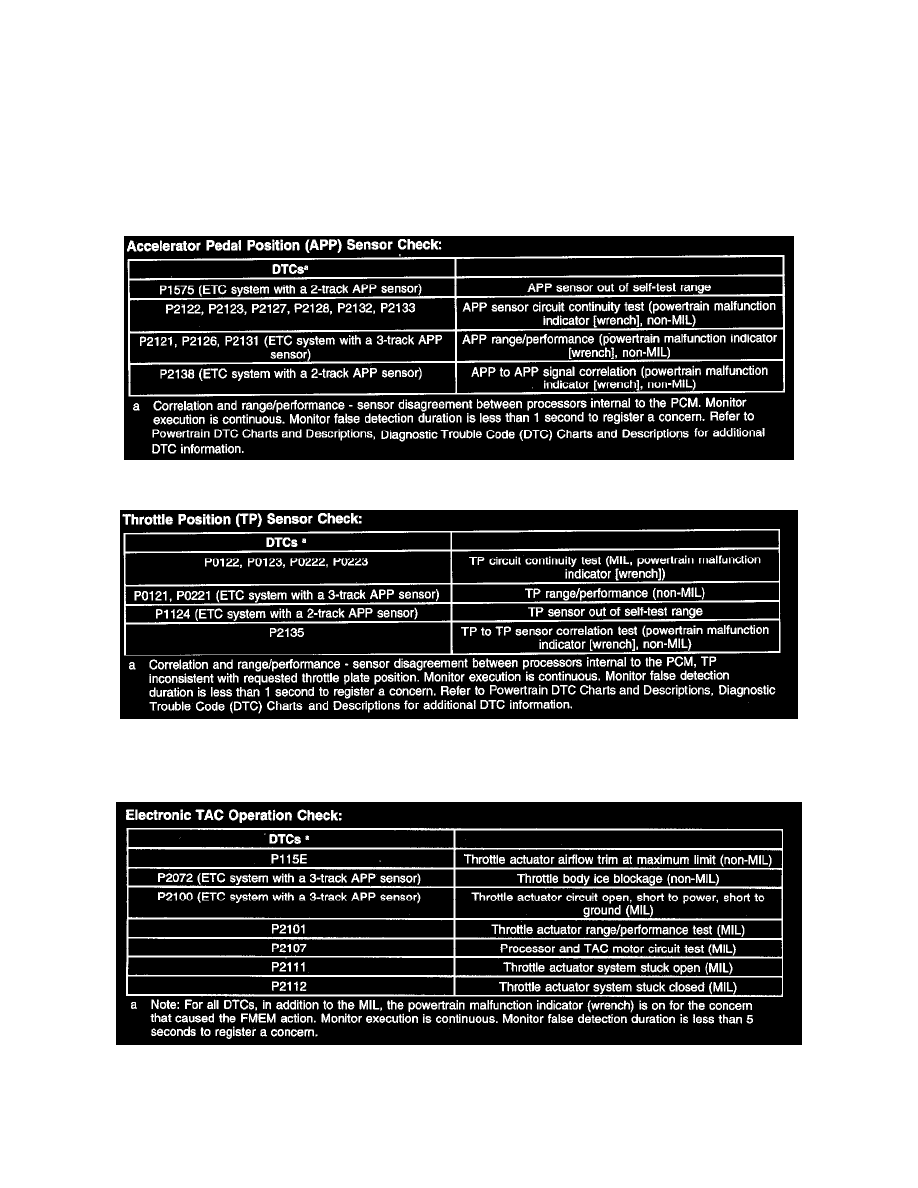E 350 V8-5.4L (2008)

The torque based ETC strategy was developed to improve fuel economy and to accommodate variable camshaft timing (VCT). This is possible by not
coupling the throttle angle to the driver pedal position. Uncoupling the throttle angle (produce engine torque) from the pedal position (driver demand)
allows the powertrain control strategy to optimize fuel control and transmission shift schedules while delivering the requested wheel torque.
The ETC monitor system is distributed across 2 processors within the PCM: the main powertrain control processor unit (CPU) and a separate
monitoring processor. The primary monitoring function is carried out by the independent plausibility check (IPC) software, which resides on the main
processor. It is responsible for determining the driver-demanded torque and comparing it to an estimate of the actual torque delivered. If the generated
torque exceeds driver demand by a specified amount, appropriate corrective action is taken.
APP and TP Sensor Inputs
Accelerator Pedal Position (APP) Sensor Check
Throttle Position (TP) Sensor Check
Electronic Throttle Actuator Control (TAC) Output
Electronic TAC Operation Check
